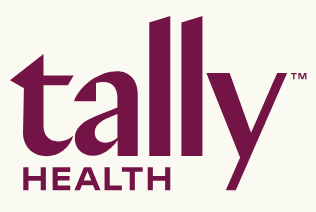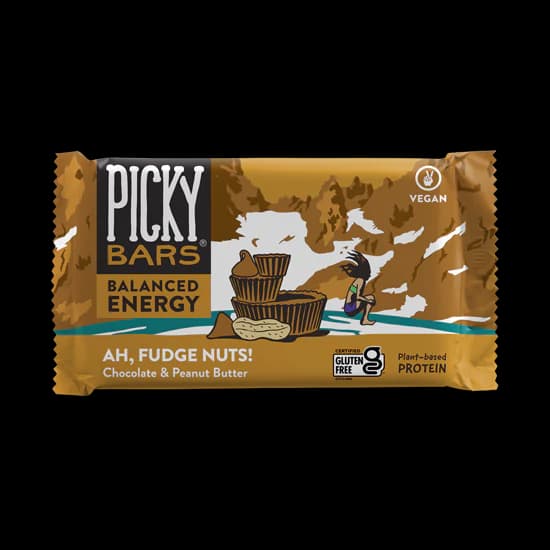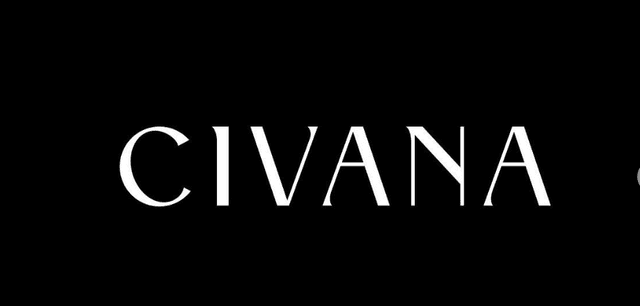Creating an effective exercise program can seem like a big task, but it's all about understanding the basics and building from there. This guide will help you design a workout plan that fits your goals, keeps you motivated, and ensures you stay healthy.
Key Takeaways
- Understanding the core components of an exercise program is essential for balanced fitness.
- Setting realistic fitness goals helps you stay on track and measure your progress.
- A balanced workout routine includes various types of exercises and proper rest.
- Nutrition plays a crucial role in supporting your fitness efforts.
- Preventing injuries and promoting recovery are key to long-term success.
Understanding the Core Components of an Exercise Program
Cardiovascular Training
Cardiovascular training, often called cardio, is essential for heart health and overall endurance. It involves activities that increase your heart rate, such as running, cycling, or swimming. Regular cardio can help improve lung capacity, burn calories, and reduce the risk of chronic diseases.
Strength Training
Strength training focuses on building muscle mass and strength. This can be achieved through weightlifting, resistance band exercises, or body-weight workouts like push-ups and squats. Strength training not only enhances muscle tone but also boosts metabolism and supports bone health.
Flexibility and Mobility
Flexibility and mobility exercises are crucial for maintaining a full range of motion in your joints. Activities like stretching, yoga, and Pilates can help improve flexibility, reduce the risk of injuries, and alleviate muscle tension. Incorporating these exercises into your routine ensures that your body remains agile and less prone to strains.
Setting Realistic Fitness Goals
Identifying Personal Objectives
When setting fitness goals, it's important to be clear about what you want to achieve. Whether it's losing weight, gaining muscle, improving endurance, or just getting fitter overall, specific goals help you stay focused. Make sure your goals are measurable, like running a certain distance or lifting a specific weight. Also, set targets that are realistic based on your current fitness level and lifestyle.
Tracking Progress
Keeping track of your progress is key to staying motivated. You can use a journal, an app, or even simple charts to record your achievements. Regularly checking your progress helps you see how far you've come and what still needs work. This can be as simple as noting down your workout times, weights lifted, or distances run.
Adjusting Goals Over Time
As you progress, your goals might need to change. It's important to review and adjust them to keep them challenging but achievable. If you find a goal too easy or too hard, tweak it to better match your current abilities. This keeps your fitness journey dynamic and engaging.
Remember, setting realistic fitness goals is a continuous process. Stay flexible and be ready to adapt as you grow stronger and more capable.
Creating a Balanced Workout Routine
Combining Different Types of Exercise
A well-rounded exercise routine should include a mix of cardiovascular training, strength training, and flexibility exercises. This variety ensures that all aspects of fitness are addressed. For example, you might run or cycle for cardio, lift weights for strength, and do yoga for flexibility.
Scheduling Rest and Recovery
Rest days are just as important as workout days. They allow your muscles to repair and grow, reducing the risk of injury. Aim to have at least one or two rest days each week. You can also include light activities like walking or stretching on these days to keep your body moving without overexerting it.
Adapting to Individual Needs
Everyone's fitness journey is unique. Tailor your workout routine to fit your personal goals, fitness level, and any physical limitations you might have. This might mean adjusting the intensity, duration, or type of exercises you do. Listening to your body is key to long-term success.
Remember, a balanced workout routine is not just about working hard but also about working smart. Mix different types of exercises, schedule rest, and adapt to your needs to achieve the best results.
Incorporating Nutrition into Your Fitness Plan
Macronutrients and Micronutrients
Understanding the role of macronutrients and micronutrients is crucial for any fitness plan. Macronutrients include carbohydrates, proteins, and fats, which provide the energy needed for workouts. Micronutrients, such as vitamins and minerals, support various bodily functions and overall health. A balanced diet ensures you get the right mix of both.
Pre- and Post-Workout Nutrition
What you eat before and after your workout can significantly impact your performance and recovery. Pre-workout meals should be rich in carbohydrates to fuel your exercise, while post-workout nutrition should focus on proteins to aid muscle repair. Here’s a simple table to guide you:
| Meal Timing | Nutrient Focus | Examples |
|---|---|---|
| Pre-Workout | Carbohydrates | Oatmeal, Banana, Whole-grain toast |
| Post-Workout | Proteins and Carbs | Chicken breast, Quinoa, Greek yogurt |
Hydration Strategies
Staying hydrated is essential for peak performance. Water regulates your body temperature and lubricates your joints. Aim to drink water throughout the day and increase your intake during and after workouts. Dehydration can lead to fatigue and decreased performance, so always keep a water bottle handy.
Proper nutrition is the cornerstone of any effective fitness plan. By paying attention to what you eat and drink, you can enhance your workouts and achieve your fitness goals more efficiently.
Preventing Injuries and Promoting Recovery
Warm-Up and Cool-Down Techniques
Warming up before exercise and cooling down afterward are essential steps to prevent injuries. A good warm-up increases blood flow to muscles, making them more flexible and less prone to injury. Cooling down helps to gradually lower your heart rate and stretch muscles, reducing stiffness.
Recognizing and Addressing Overtraining
Overtraining happens when you exercise too much without giving your body enough time to recover. This can lead to injuries and a lack of progress. It's important to listen to your body and take rest days when needed. Signs of overtraining include persistent fatigue, irritability, and a drop in performance.
Effective Recovery Practices
Recovery is just as important as the workout itself. Here are some effective recovery practices:
- Get enough sleep to allow your body to repair and grow stronger.
- Stay hydrated to help your muscles recover faster.
- Eat a balanced diet rich in proteins and vitamins.
- Use foam rollers or get massages to relieve muscle tension.
Taking care of your body through proper warm-up, cool-down, and recovery practices can significantly reduce the risk of injuries and improve your overall performance.
Enhancing Performance with Advanced Techniques
High-Intensity Interval Training (HIIT)
High-Intensity Interval Training, or HIIT, is a powerful way to boost your fitness. It involves short bursts of intense exercise followed by rest or low-intensity periods. This method can improve cardiovascular health and burn more calories in less time. Here’s a simple HIIT routine:
- Warm-up for 5 minutes.
- Sprint for 30 seconds.
- Walk or jog for 1 minute.
- Repeat steps 2 and 3 for 20 minutes.
- Cool down for 5 minutes.
Periodization and Progressive Overload
Periodization is about planning your training in cycles. This helps in avoiding plateaus and overtraining. Progressive overload means gradually increasing the difficulty of your workouts. You can do this by adding weight, increasing reps, or trying harder exercises. Both techniques are key for continuous improvement.
Mental Strategies for Peak Performance
Your mind plays a big role in your fitness journey. Techniques like visualization, goal setting, and positive self-talk can help you push through tough workouts. Staying mentally strong is just as important as physical training.
Remember, advanced techniques require dedication and consistency. Keep pushing your limits, but also listen to your body to avoid injuries.
Evaluating and Adjusting Your Exercise Program
Regular Fitness Assessments
Regularly checking your fitness levels is crucial. Assess your progress every six weeks after starting your program, and then every few months. This helps you see if you're meeting your goals or if you need to make changes. If you lose motivation, try setting new goals or switching up your activities.
Feedback and Adaptation
When making changes to your program, look at your results to see what's working and what isn't. If your goal was to get stronger but you haven't improved after 12 weeks, something might be wrong. Check your training logs and other progress indicators to understand what happened.
Long-Term Planning and Sustainability
To keep your exercise program effective over time, it's important to plan for the long term. This means regularly updating your goals and making sure your routine stays challenging and fun. If you're not improving, that's okay. You can always make changes like switching exercises, adjusting sets and reps, or changing rest intervals.
Keeping track of your progress and making necessary adjustments is key to optimizing your fitness plan. Regular assessments and being open to change will help you stay on track and reach your goals.
Conclusion
Designing an effective exercise program is key to achieving your fitness goals. By understanding the different components, such as strength training, cardio, flexibility, and balance, you can create a well-rounded plan that suits your needs. Remember, it's important to set clear goals, stay consistent, and listen to your body to avoid injuries. With the right approach, you can improve your overall health and enjoy the benefits of a comprehensive exercise program. Keep pushing forward and stay motivated on your fitness journey!
Frequently Asked Questions
What are the main parts of a good exercise program?
A good exercise program includes cardio, strength training, and flexibility exercises. These help improve your heart, muscles, and overall movement.
How do I set realistic fitness goals?
Start by figuring out what you want to achieve, like losing weight or building muscle. Then, track your progress and be ready to change your goals as you improve.
How can I create a balanced workout routine?
Mix different types of exercises and make sure to include rest days. It's also important to listen to your body and adjust your routine to fit your needs.
Why is nutrition important for fitness?
Eating the right foods gives your body the energy it needs to work out and recover. Make sure to include a mix of proteins, carbs, and fats in your diet.
How can I prevent injuries while exercising?
Always warm up before you start and cool down when you're done. Pay attention to your body and avoid pushing yourself too hard.
What are some advanced techniques to improve performance?
You can try high-intensity interval training (HIIT) or use strategies like periodization. Mental techniques, like staying focused, also help you do your best.























